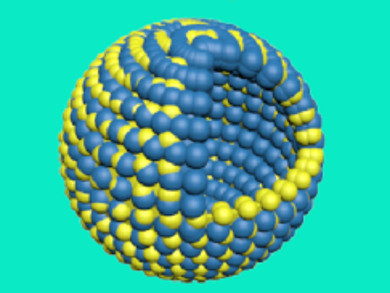Hybrid hollow particles have received particular research attention because of their unique structural features. Although chemists have investigated different kinds of hybrid hollow particles, the fabrication of hollow quantum-dot-functionalized semiconductors has rarely been reported.
Suli Wu, Dalian University of Technology, China, and colleagues have developed an “ion adsorption-heating” method to synthesize PbS-TiO2 hollow hybrid structures (pictured). The team used amorphous TiO2 spheres as a substrate to grow PbS. The TiO2 spheres are composed of a large number of small amorphous TiO2 particles, each covered by thioglycolic acid ligands. The crystallization of TiO2 spheres and the formation of PbS were simultaneously carried out. During the process, owing to the Kirkendall effect of S2– diffusion and Ostwald ripening effect of the crystallization of TiO2, a PbS-TiO2 hollow hybrid structure was obtained.
The hollow PbS-TiO2 hybrid spheres exhibit high photocatalytic activity for the decomposition of Cr6+ compounds. The developed route provides a new strategy to fabricate hybrid hollow structures.
- Control synthesis of PbS-TiO2 hollow hybrid structures through ion adsorption-heating progress and their photocatalytic activity,
Hongbo Xia, Suli Wu, Shufen Zhang,
Chem. Asian J. 2017.
DOI: 10.1002/asia.201701204




